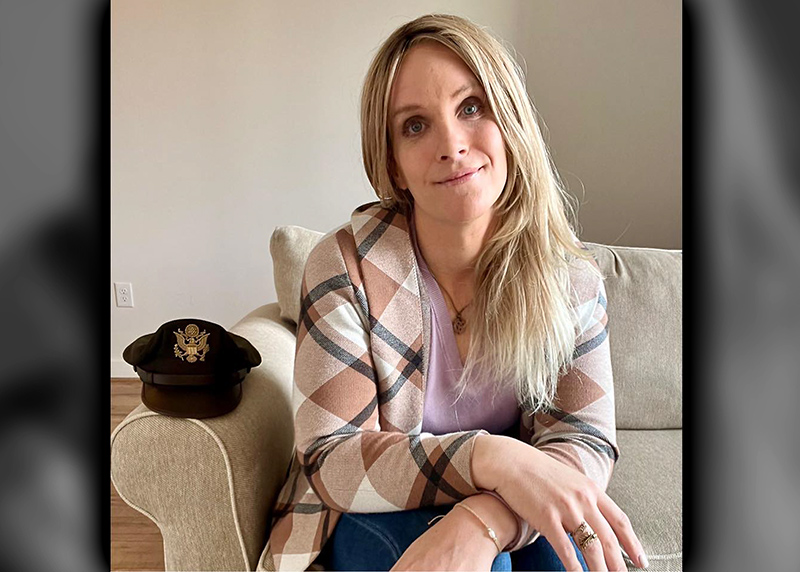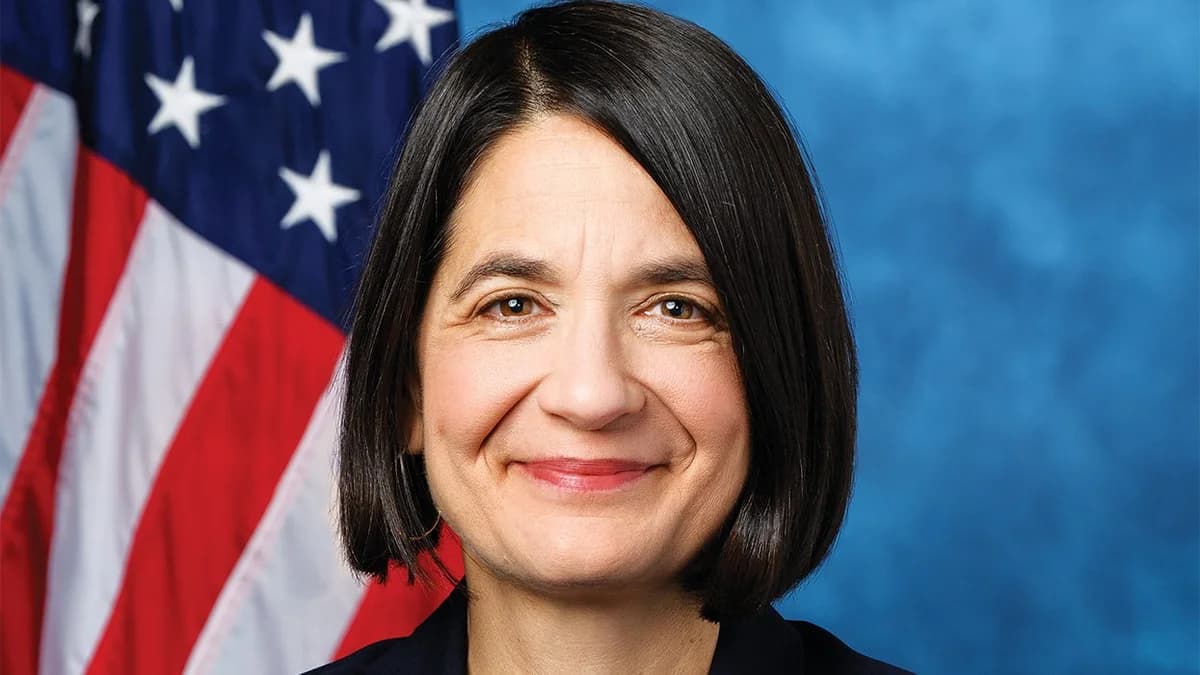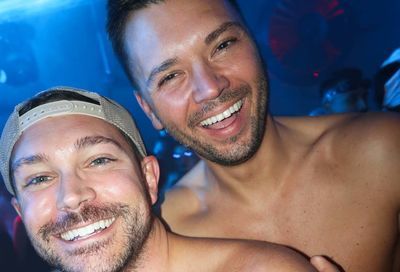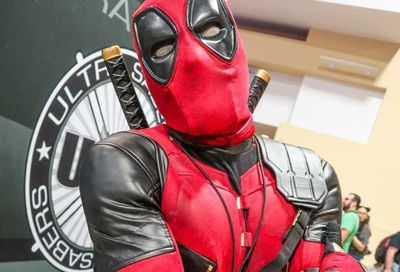Annie Adjchavanich
Photographer of female illusionists talks candidly about her big, bold portraits

You’ve probably seen the posters all over town, plastered on, every available newspaper stand and lamppost. At First glance you think, ”Gee, that’s an interesting picture of Marilyn Monroe.” And then you realize…
It’s an imitation. And a at that a pretty damn good one.
An impersonation.
An illusion.
A man.
Your curiosity stoked, you saunter over to the Hemphill Fine Arts, an elegant albeit tiny gallery tucked away on 33rd Street, down by the canal. And there you are overwhelmed by twelve magnificent portraits of men in various states of drag.
You wonder: Who is the photographer who takes these wonderful pictures, and why is she so obsessed with female illusionists? Oh and, how the hell do you pronounce her last name?
Wonder no more.
Metro Weekly: Let’s start with your name, the name no one can spell or pronounce.
Annie Adjchavanich: I’ve had trouble with it since first grade. On the first day of school, when the teacher checked off who was in class, I always dreaded that few seconds before she would start. I’d just blurt it out and she’d say thanks and move on.
MW: Don’t get me wrong, it’s a beautiful name. It’s just quite an eyeful. But as a collection of letters, it’s memorable. What kind of name is it?
Adjchavanich: Thai. My family’s Thai, with origins in China.

MW: How do you pronounce it exactly?
Adjchavanich: Au-show-an-it.
MW: Have you ever considered changing it for professional reasons?
Adjchavanich: No. But if I ever get married, I’ll change it.
MW: You could always just hyphenate.
Adjchavanich: I won’t hyphenate. I’ll just drop it.
MW: Your subject matter is predominately drag queens…
Adjchavanich: I prefer the term female illusionist or female impersonator.
MW: Let’s talk about that, because it seems many of them do as well. It used to always be called drag, but in the past few years there’s been this politically correct switch. Why?
Adjchavanich: I think female illusionist is a much kinder term not as condescending. The girls will call themselves drag queens to one another, but if used the wrong way [the term] can be taken with a lot of disdain. Female impersonator is a little more professional, since the whole thing is a kind of sport.
MW: A sport? How so?
Adjchavanich: These men—these female illusionists—are a club, like the Lions or the Kiwanis. They get together and perform for each other and their families—or houses, as they’re called—and they all work together to get each other ready for these events. They help each other with their hair, making gowns, trading gowns, lending gowns, lending shoes, finding wigs, styling wigs. They’re creating the female illusion. It’s an art and shouldn’t be taken as some kind of weird sub-cultural type of going on. It’s theatre.

If you approach it as theatre or art, yes it is. But some of these are men who live their lives as women. And I would say that certainly goes beyond art, wouldn’t you?
I think it’s just taking it one step further. I mean it’s really showing dedication toward what I think of as an artform.
To be honest, it’s hard to tell sometimes that they’re biological men—which, by the way, is a clever name for your show. I think a lot of gay men, and perhaps some lesbians, feel threatened by this segment of the society and look down on them, unfairly. That may be true, but I’m afraid I can’t speak for the girls. Not being an impersonator myself, I’m not in their shoes to say how they must feel.
MW: I realize you’re not a lesbian, but don’t you think it’s ridiculous that there are facets of the gay and lesbian community that say to these men: ”Well, you’re not in the mainstream, so you really can’t be included?”
Adjchavanich: [The gay community seems to] view female impersonators and leathermen as making the [community as a whole] look bad. And I really don’t see that as true. People who do that are just as irresponsible as, say, heterosexuals who look down at gays.
MW: Certainly men in drag have been mainstay of theatre since early Greek and Roman times. But from a non-performance perspective, do you find that the men who live their lives as women act differently?
Adjchavanich: Well, they’re more aware of.. .what femininity is about. They pay very close attention to details — perfect hair, perfect makeup. Even if they’re running across the street to get a soda, they dress up. And they’re usually flawless; they wouldn’t be seen frumpy. And that’s where it goes back to being an artform. The men I know who live as women are simply extending their artform. They’re not sitting around in their underwear watching a ball game or anything, but are living as women twenty four hours a day.
MW: If you’re biologically a man and are living completely as a woman—without having a sex change, isn’t that carrying it a little far?
Adjchavanich: Maybe nature’s cheated some men in a certain way, and if they had to be brought up as boys, well, fine—but they don’t have to live their lives that way.
MW: I think we’ll make you the national spokesperson for all transvestites.
Adjchavanich: I don’t know if I’m qualified to do that.
MW: Let’s talk about your development as a photographer.
Adjchavanich: I went to school at the Corcoran School of Art. I did a senior thesis show on couples.
MW: Couples, meaning?
Adjchavanich: Gays, straights, people living in arrangements. There are a couple of photographs that were particularly memorable [that] got me attention from a curator named Angela Adams. She was putting together a show called ”the issues of gender” and thought my work fit right in with what she was doing. One of my favorite pictures was one of two men kissing in a bathroom. And then there’s another photograph of a lesbian couple in a sweetheart pose. In both examples.. .there was kind of an androgynous element that ran throughout. So [I started thinking about] androgyny, issues of feminism. Anyway, I was fortunate enough to start leasing a photo studio space in Arlington. There was a hairdresser who worked above my studio and he told me that he was doing these shows. Eventually, I went to one and learned he was a female impersonator.
And he was just devastating. He looked perfect.

MW: What was his name?
Adjchavanich: His girl name is Eve Harrington. We immediately set up a photo shoot. The pictures came out great. And I’d continue to go to these events where they were having these shows. I began to start photographing the girls that looked particularly feminine to me and started exploring issues of what is feminine? You know is it the photograph that makes the woman feminine? Or does the woman actually have to be a woman?
MW: What have you learned?
Adjchavanich: I think that it’s the idea of feminine that can be extended through a photograph.
Basically what I’m doing—the whole ambition of this whole photo project—is to extend the image of female impersonator. I’m taking it one step further [by] capturing it on film. You can go to a show and experience it, but the photograph captures what we’ve [just] seen.
MW: You’re immortalizing it.
Adjchavanich: That’s right.
MW: I understand this series is a culmination of four year’s work. How many pictures of these girls do you estimate you took over that period?
Adjchavanich: Thousands, probably.
MW: And there are how many pictures in the show?
Adjchavanich: Twelve. At least, on the wall. There’s more in a book that you can order from. It’s a very elegant looking show.
MW: I understand that the gallery’s owner, George Hemphill, oversaw the entire process. In that sense, is a curator like a film director?
Adjchavanich: Absolutely. George has my total trust. He’s the hardest working gallery owner in Washington.
He lives and breathes the artists in his shows, twenty four hours a day. I couldn’t have hoped for a better media turnout and crowd at the opening.
MW: I know that Mr. Hemphifi isn’t gay, but he certainly seems gay friendly.
Adjchavanich: I don’t feel as though there are that many galleries in town that are really all that open to gay patrons, and [George] is really trying to open that door, to get people in.
MW: So he helps you select the prints. Focusing it down to twelve individual pictures must be a very hard selection process.
Adjchavanich: This is what [George] feels are the best of four years of work so far; they’re his picks. We’re confined to a certain space limitation. That’s why we only have twelve up. Plus we don’t want to crowd the show. Sure, if we had room after room after room, we would fill room after room after room.
MW: Do you ever worry about being typecast as an artist, as in, ”Oh, she’s the one who does female illusionists?”
Adjchavanich: No. I think it’s really been good for me, because I’ve gotten to know a lot of people in the gay community who are impersonators. They all know me. When they’re giving up their crowns, they all come to me for their photographs or publicity pictures, or to have a souvenir from that period of their lives. And I’ve had a lot of repeat customers. Girls who want promo pictures, sweetheart pictures, head shots, things like that, for their lovers and their friends. It’s very flattering to me.
MW: How long do you think you’ll continue with this series?
Adjchavanich: I can’t say I’ll be doing this forever, but I would like to be able to carve out a pretty substantial amount of work while I’m doing the series. The way I look at it, I’m documenting a particular time period in the person’s life. I’m also documenting the many types of characters they can do. I have one girl that does Bette Davis, Cher, Marilyn Monroe, countlesss personalities; she’ll come to me and we’ll document her new personality
MW: Artistically you’re travelling down a very interesting avenue. The name Diane Arbus crops up a lot with regard to ”drag queen photography.” Do people compare you to her because of the similar thematic subject matter?
Adjchavanich: My approach is markedly different; I’m not as predatory as Diane Arbus was. She would follow people around on the subway and beg them to take their photographs if they’d said no. She would steal photographs sometimes—just go and take the picture. My pictures aren’t about that. I do it the socially proper way. I become introduced to the ”woman,” or the model…. And I let them know up front that these photographs could possibly be used for an exhibition, and ask if they have any problems with that. I have a lot of photographs that have great visual impact. But they’re not necessarily very flattering to the model. And I keep that kind of thing in mind, because I don’t want to embarrass anyone. I have respect for my models. Going out and grabbing as much attention as I can—that’s not what I’m about [and] that’s not what my pictures are
about. The goal is to show a common humanity We’re all human, [and] I hope that
viewers of my work will come away from the show with a better understanding of the female impersonator group.
MW: Are you friends with your models?
Adjchavanich: Absolutely. I have pretty good relationships with them. I remain friends with all the girls.

MW: You have something going on in Arlington?
Adjchavanich: I was a recipient of an Arlington County grant, and my proposal was to continue working on this ”Biological Men” series. It’s for their ’94 Visual Artist Grants. So, it’s a group show [now open at the Eclipse Arts Center on North Fairfax drive].
MW: You were awarded a grant for this work.
Adjchavanich: Right.
MW: From Virginia. It’s so hard to believe.
Adjchavanich: It’s incredibly hard to believe!
What went wrong with the Virginia system there, I wonder? Maybe they think you’re taking pictures of real women.
Adjchavanich: As I understood it, there was a little opposition, but I guess they thought I was worthy, based on my body of work.
Well, these are serious portraits. But even so, look what happened with Mapplethorpe. I sometimes wonder if it shouldn’t be the responsibility of private donors to cultivate the arts in this country.
I think that if it were totally reliant on private donors, there wouldn’t be enough money for everyone. I think it is the responsibility of the public to help fund the arts. Otherwise they’ll just die off. But look at the times when artists had patrons. And that’s how they made their livings. They made their art and their patrons paid for them to live and to eat.
Adjchavanich: It doesn’t happen anymore. People have decided to put their money elsewhere these days.
MW: Do you ever lie awake at nights for endless hours thinking what if we are slowly drifting towards an artless society?
Adjchavanich: I haven’t laid up late at night thinking about it, but I do think about it. Receiving a grant is a gift to me. And I really appreciate it when they come. Nobody’s entitled to it. And if the grant giving group thinks you’re worth it, that’s great. But it will be a tragedy if the grants dry up.
MW: Back on the subject of gays or lesbians. Do you feel accepted by the community as a straight woman?
Adjchavanich: I feel as though I’ve been very welcomed and accepted fully. I don’t have to prove anything to ”the girls.” I think they appreciate me for who I am.
MW: Incidentally, why do you call them ”the girls”?
Adjchavanich: I think it’s kind of a flattering term for them. They are like girls. They gossip like girls.
They talk like girls. They dress up like girls. Every part of the feminine personality is there.
MW: What do you think your work has taught people?
Adjchavanich: It goes back to the feminism issue. Is it the photograph that makes the image feminine, or does it have to be the woman herself? My photographs are about the man being feminine.
Support Metro Weekly’s Journalism
These are challenging times for news organizations. And yet it’s crucial we stay active and provide vital resources and information to both our local readers and the world. So won’t you please take a moment and consider supporting Metro Weekly with a membership? For as little as $5 a month, you can help ensure Metro Weekly magazine and MetroWeekly.com remain free, viable resources as we provide the best, most diverse, culturally-resonant LGBTQ coverage in both the D.C. region and around the world. Memberships come with exclusive perks and discounts, your own personal digital delivery of each week’s magazine (and an archive), access to our Member's Lounge when it launches this fall, and exclusive members-only items like Metro Weekly Membership Mugs and Tote Bags! Check out all our membership levels here and please join us today!






















